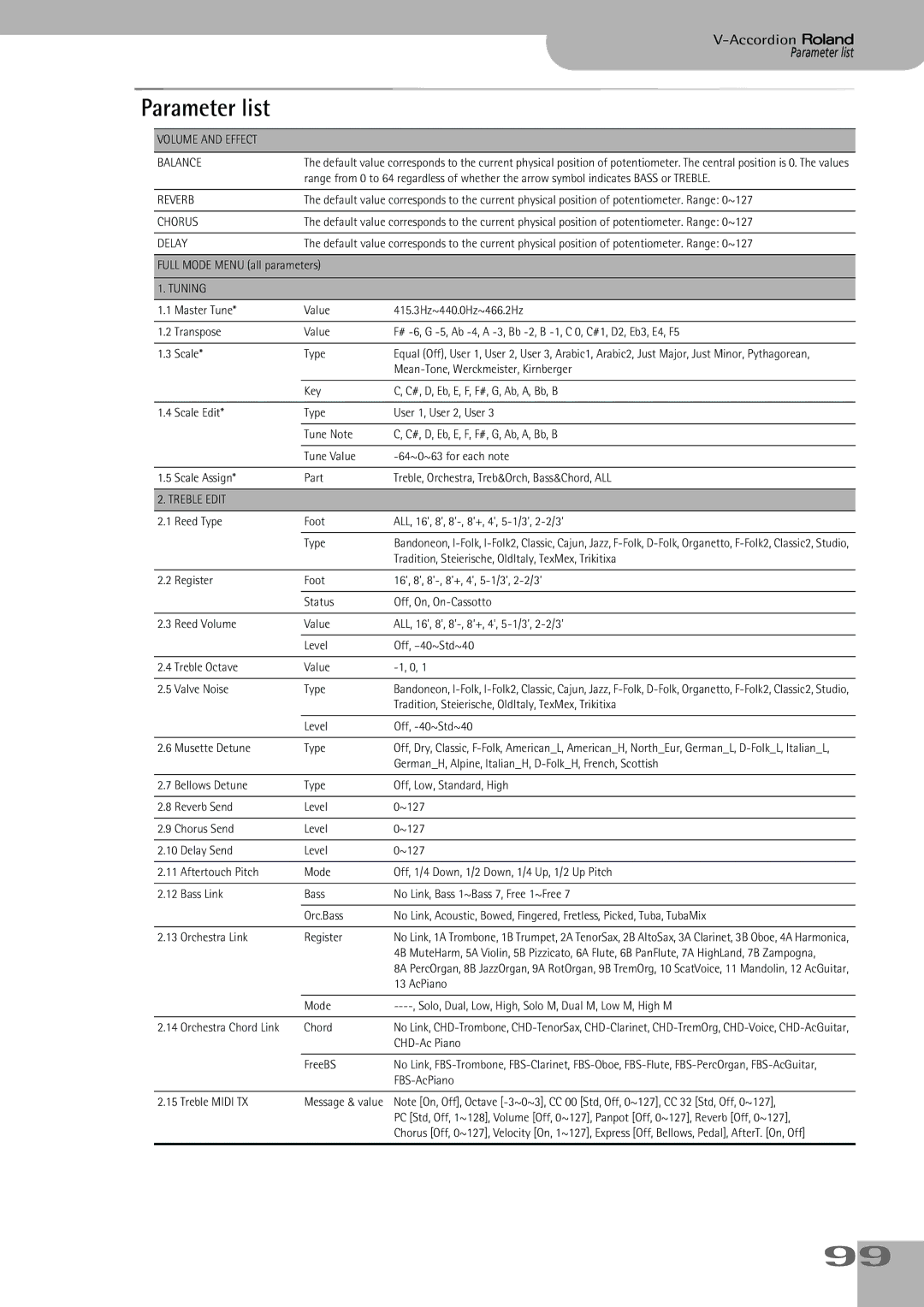FR-7, FR-5 specifications
The Roland FR-5 and FR-7 are part of Roland's acclaimed line of digital accordions, known for their innovative technologies and exceptional sound quality. These instruments have been designed to provide musicians with a versatile and rich playing experience, fusing traditional accordion elements with modern digital functionality.One of the most significant features of both the FR-5 and FR-7 is their advanced digital sound engine. This technology offers a wide array of sounds, including a variety of accordion types, reeds, and orchestral instruments. The sound quality is remarkable, with a high level of fidelity that captures the essence of authentic acoustic instruments. Musicians can easily switch between different instrument sounds, making these accordions perfect for various musical styles and genres.
Both models feature a lightweight and ergonomic design, making them comfortable to play for extended periods. The FR-5 and FR-7 have built-in speakers that provide excellent sound projection, allowing performers to play without the need for external amplification. Furthermore, the onboard effects, such as reverb and chorus, enhance the musical experience, enabling players to add depth and character to their performances.
The user interface on both models is intuitive, with easily accessible controls that allow for quick adjustments while performing. The FR-7 takes it a notch higher with its extensive customizable settings and user memory options, which can store a variety of configurations and preferences for different playing situations.
A standout feature of the FR-7 is its capability for MIDI connectivity, enabling musicians to connect to computers and other digital devices. This opens up a world of possibilities for recording and live performance setups, allowing users to integrate their accordion with software instruments and digital audio workstations.
In terms of playability, the FR-5 and FR-7 offer responsive keyboard action and a range of registers that mimic the sound of traditional accordions. The bellows response is finely tuned, ensuring that players can achieve dynamic expression through their playing style.
Overall, the Roland FR-5 and FR-7 digital accordions represent a perfect blend of traditional craftsmanship and modern technology, catering to both hobbyists and professional musicians. With their exceptional sound, lightweight design, and cutting-edge features, these instruments are redefining the possibilities of accordion music in contemporary settings. Whether one is performing on stage or practicing at home, the FR-5 and FR-7 deliver an unparalleled playing experience that inspires creativity and passion for music.

